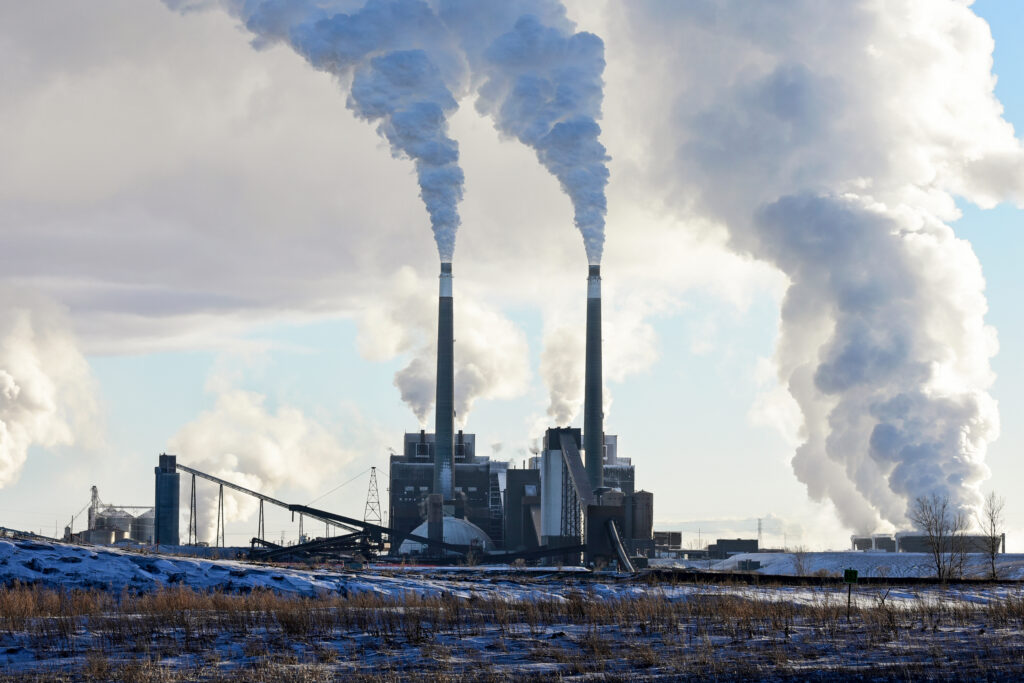The newest player on the U.S. coal scene, Core Natural Resources, had good news and bad news for investors when it announced its results for the start of the year.
The company missed Wall Street expectations with its net loss of $69 million, which it attributed mostly to birth pains: the costs of the January merger of Arch Resources and CONSOL Energy that created Core. The combined company has a solid position as the No. 2 coal producer in the United States, but that’s in a market where production has been cut in half in just a decade.
Nevertheless, company officials exulted because a surge of U.S. coal power plant shutdowns expected in 2025 was slowing. “Just since last fall, the delayed retirements have continued to build,” said Deck Slone, senior vice president for public policy, during the company’s May 8 earnings call. “Hopefully that drumbeat will continue.”
Last week, President Donald Trump’s administration grabbed the drumstick and picked up the pace. With an unusual emergency order, Energy Secretary Chris Wright blocked the retirement of the coal-fired J.H. Campbell Complex in Michigan, saying it was necessary to ensure that the lights stayed on for electricity customers in the Midwest this summer.
“This administration will not sit back and allow dangerous energy subtraction policies [to] threaten the resiliency of our grid and raise electricity prices on American families,” Wright said.
There is little doubt that U.S. electricity demand is growing after decades of staying flat, mostly due to industrial and data center needs. But there’s a great deal of debate about whether there’s a crisis; although Trump declared an energy “emergency” on his first day in office, the U.S. Energy Information Administration reported that electricity prices were lower and less volatile in 2024 than in the previous few years.
The growth of lower cost renewable energy and record-breaking deployment of battery storage across the system helped meet the new burden. And in a report last year, President Joe Biden’s administration laid out a roadmap for keeping up with demand while driving down carbon emissions, through investments in advanced grid technology and transmission and greater deployment of storage, distributed solar, wind, geothermal and advanced nuclear. Academics have proposed similar plans.
The Trump administration, which is pressing Congress to end Biden-era spending on an energy transition, instead favors the coal industry’s argument that the solution to growing electricity demand is already at hand—keeping old plants open. Electric grid operators have bolstered that view, calling it “one of the easiest approaches” to address the strain the system may face in the high-demand summer months, particularly in the Midwest.
Consumer and environmental advocates argue that the Trump administration’s intervention in the marketplace to keep Campbell and other fossil fuel plants open will be costly—for consumers, the environment and health.
According to a new study, costs have been rising significantly at the Campbell plant, and it happens to have the largest carbon footprint of the 13 coal plants that had been scheduled to close in 2025. Its smokestacks are among the top 10 industrial sources of hazardous pollution in Michigan, according to the federal Toxics Release Inventory, spewing mercury, lead, ammonia and other compounds. Advocates have argued its closure would save nearby residents millions of dollars in health care costs.
Cutting Carbon, Cutting Costs
The Department of Energy did not immediately respond when asked about the criticisms of the order keeping Campbell open. The federal government has issued emergency orders under the Federal Power Act about 25 times in the past 25 years to keep power plants running. But for the most part, this has occurred because of hurricanes, heat waves and overt shortages, like the California crisis of 2000.
The Campbell plant directive was one of four emergency orders that the Trump administration issued in just the past month, all of them pushing aside environmental and public health concerns in favor of getting and keeping power online.
In two May 16 orders, Wright directed Puerto Rico’s public power authority to cut back vegetation and override environmental laws to get old fuel oil generation stations running. On May 30, Wright blocked the planned retirement of the aging Eddystone oil and natural gas plant in Pennsylvania, arguing it was needed to shore up the grid against potential summer outages.
It was essentially the same argument Wright made on May 23, when he directed Campbell’s owner, Consumers Energy, to keep its 63-year-old plant in operation for 90 days—the maximum period allowed under the law (although such orders can be renewed).

The planned May 31 shutdown of Campbell, on the east shore of Lake Michigan, had been part of Consumers’ much-vaunted transition to cleaner energy. The company was already moving its workers at Campbell to other facilities and had planned an open house for local communities in June to mark the Campbell closure, which was set to happen years ahead of schedule.
That’s not to say everyone was happy. At least one local township council passed a resolution urging the utility to keep the plant open, and a group of Republican state legislators from Michigan sent a letter to Trump administration officials asserting that the plant had “years of useful life yet.”
But Consumers’ move to shutter Campbell wasn’t only about climate. Like most coal plants, Campbell was expensive to run. Consumers Energy had projected the retirement would save ratepayers $600 million over the next 20 years. The think tank Energy Innovation has calculated that like 95 percent of the U.S. coal fleet, Campbell could be replaced with local wind or solar at an immediate savings to consumers. In a new analysis released Wednesday, Energy Innovation reported that costs per megawatt-hour of operations at Campbell increased 21 percent, faster than inflation, since the group’s last detailed look at the facility in 2021.
“This is a plant that was preparing for retirement,” said Michelle Solomon, a manager in Energy Innovation’s electricity program. “I imagine they’ve used up all of their coal stored on site that they bought with long-term contracts. There’s a question of, have they been doing the maintenance required to keep this plant operational over the summer, and if not, is it even going to be a reliable plant, whether or not it’s needed?”
Brian Wheeler, a spokesman for Consumers Energy, says that the company has arranged for new shipments of coal to keep the plant operating.
“Consumers Energy plans to comply with the Department of Energy order,” he said. “We are pausing decommissioning activities at the Campbell plant and will operate it in compliance with the order, working in conjunction with MISO,” the Midcontinent Independent System Operator, the organization that manages the regional grid.
“The company is actively working to determine appropriate cost recovery consistent with applicable law and the federal order,” Wheeler added. Typically, such costs are recovered through charges on customer bills, after approval of state regulators.
The Campbell plant’s retirement was viewed by many environmentalists as another victory in a long campaign to get the nation to transition away from the most carbon-polluting electricity fuel. About 780 coal power units in the United States have shut down since 2000, and coal’s share of the nation’s electricity mix has fallen from 50 percent to 16 percent. Even so, coal’s carbon intensity is such that it still generated more than half of the power sector’s carbon emissions, as of 2022.
This story is funded by readers like you.
Our nonprofit newsroom provides award-winning climate coverage free of charge and advertising. We rely on donations from readers like you to keep going. Please donate now to support our work.
Donate Now
The Campbell plant released 6.6 million metric tons of carbon in 2023, the most recent year for which data is available. That’s more heat-trapping emissions than any of the other 12 coal plants that had been slated to shut down this year. An analysis by the Clean Air Task Force calculated that other pollutants from the Campbell complex, including harmful microscopic particles called particulate matter, were high enough to be associated with 44 premature deaths and 455 asthma attacks yearly.
“There is no basis for the DOE’s order whatsoever,” said Greg Wannier, a senior attorney at the Sierra Club, which has led a campaign to get the nation “Beyond Coal.” He pointed to an assessment of the Midwestern region’s electricity resources by MISO, completed just two days before Wright’s order, that concluded that the system’s capacity would be sufficient this summer if operations were normal.
But MISO and the other grid operators have been among the strongest voices calling for the old plants to stay open.
Grid Operators Urge Retirement Slowdown
In issuing his order to keep the Campbell plant open, Wright cited the summer assessment of the national grid oversight body, the North American Electric Reliability Corp., which found the entire middle of the country was at “elevated risk” for power outages at times of high demand.
MISO’s own senior vice president for planning and operation, Jennifer Curran, testified before Congress in March that the system was challenged by increasing demand at the same time that more intermittent resources like wind and solar were coming onto the grid. Even while MISO has maintained that its capacity resources are sufficient in the short term, she said more generation was “desperately needed to meet resource adequacy and reliability risks.”
“One of the easiest approaches,” she said, “is to slow down the retirement of existing resources.”


In emailed responses to questions from Inside Climate News, MISO spokesman Brandon Morris said the grid operator is working with Consumers Energy to comply with Wright’s order. To address reliability issues, he said, “delaying retirements or having a similar resource to replace it is still MISO’s position.” That doesn’t mean the grid operator is favoring coal, he said.
“MISO operates a fuel- and resource-agnostic market, calling on the most cost-efficient resources first to meet demand,” Morris wrote.
Nevertheless, Campbell is now the second coal plant in the MISO region that will not be closing down as planned in 2025. Vistra announced in December it would delay retirement of its Baldwin coal plant in Illinois “amid widespread concern over reliability in the MISO market.”
Meanwhile, the neighboring grid operator, PJM Interconnection, negotiated an agreement in January that keeps Talen Energy’s Brandon Shores coal plant in Maryland alive, a move protested by the state’s consumer advocate.
How often the Campbell, Baldwin and Brandon Shores plants run and how much coal they burn will depend on weather conditions and market prices as the grid operators work in real time to deploy generation to meet demand. But the three deferred coal plant retirements put at risk nearly one third of the 47 million metric tons of carbon emissions cuts that were expected from the sector due to retirements this year.


John Moore, a senior attorney at the Natural Resources Defense Council, said the emergency orders to keep plants open were “wholly unnecessary,” noting that both MISO and PJM had studied the retirements at the time they were proposed and found no need to keep the plants online. Moore said some of the issues grid operators now face are of their own making, due to poor planning and in PJM’s case, a years-long backup of clean energy projects that are queued up, waiting approval to be connected to the grid.
“To avoid actual grid emergencies in the future, the [grid operators] need to step up their resource adequacy game, especially PJM, whose planning, interconnection, and markets have not kept pace with the energy transition,” Moore wrote in an email.
“Grid operators should be opposing these orders,” he said. “Unfortunately, their tacit or explicit acceptance signals that their resource adequacy processes aren’t working. They need to robustly plan within and between grid regions and break the unacceptable logjam in the enormous interconnection queues. Until they do, consumers and public health will suffer the consequences.”
Staying “In the Mix”
The coal industry sees deferred retirements in a different light. Before the start of this year, the nation’s second-largest coal mine, Core Natural Resources’ Black Thunder Mine in Wyoming, was facing the imminent loss of nearly 12 percent of its sales volume due to power plant retirements, according to data collected by the Energy Information Administration. Campbell was the largest buyer of five Black Thunder customer plants that had recently closed or were closing in 2025.
Core Natural Resources made the case for action directly with Trump administration officials, according to its first quarter lobbying disclosure. Although it didn’t mention specific power plants, the company reported advocating on “grid reliability issues” and “energy-related executive orders.”
Core did not immediately respond to a request for more details on its pleas to the Trump administration. In recent years, the coal industry has been spending roughly $4 million per year on lobbying, according to the watchdog group OpenSecrets. That’s a fraction of the $14 million to $24 million it spent 16 years ago to block President Barack Obama’s effort to get Congress to pass climate legislation. Nevertheless, the diminished dollars have gone a long way. Trump laid the groundwork for the Campbell order in his first-day declaration of an energy emergency and a slew of orders he issued on April 8 aimed specifically at keeping the coal industry alive.
“It’s nice to have an administration that recognizes the industry and the importance that it has on the U.S. economy and really what it means relative to power prices in the U.S.,” said Core Natural Resources CEO Paul Lang in the company’s earnings call last month. “They believe coal should be in the mix and should stay in the mix.”
Whether presidential power can beat the forces lined up against coal remains to be seen. This week, Core notified 200 mineworkers in West Virginia they’d be losing their jobs this summer due to “weaker than expected market conditions.”
Inside Climate News’ Dan Gearino contributed to this report.
About This Story
Perhaps you noticed: This story, like all the news we publish, is free to read. That’s because Inside Climate News is a 501c3 nonprofit organization. We do not charge a subscription fee, lock our news behind a paywall, or clutter our website with ads. We make our news on climate and the environment freely available to you and anyone who wants it.
That’s not all. We also share our news for free with scores of other media organizations around the country. Many of them can’t afford to do environmental journalism of their own. We’ve built bureaus from coast to coast to report local stories, collaborate with local newsrooms and co-publish articles so that this vital work is shared as widely as possible.
Two of us launched ICN in 2007. Six years later we earned a Pulitzer Prize for National Reporting, and now we run the oldest and largest dedicated climate newsroom in the nation. We tell the story in all its complexity. We hold polluters accountable. We expose environmental injustice. We debunk misinformation. We scrutinize solutions and inspire action.
Donations from readers like you fund every aspect of what we do. If you don’t already, will you support our ongoing work, our reporting on the biggest crisis facing our planet, and help us reach even more readers in more places?
Please take a moment to make a tax-deductible donation. Every one of them makes a difference.
Thank you,



















